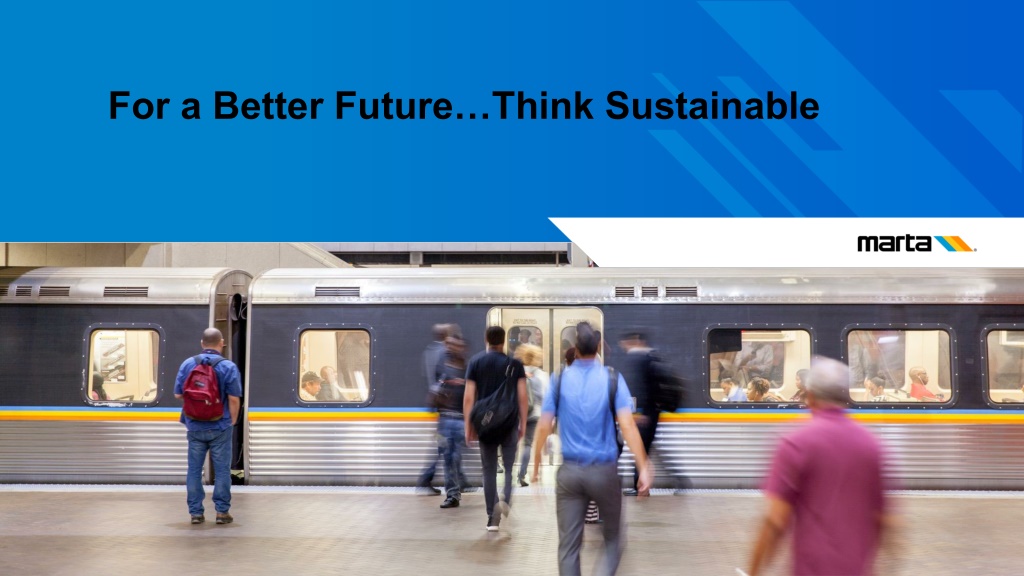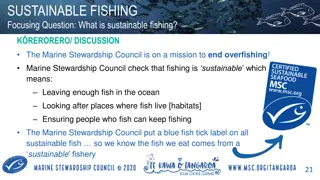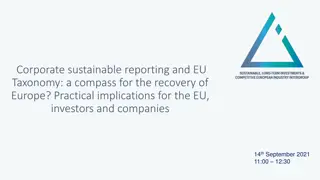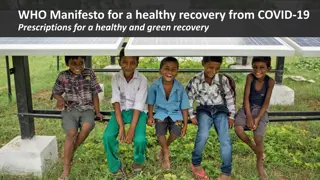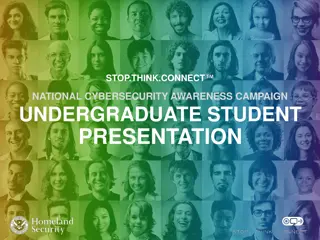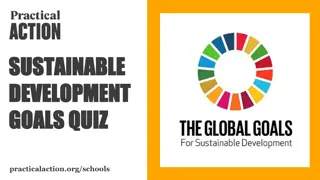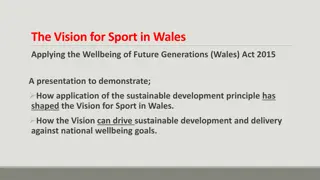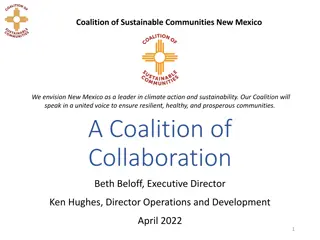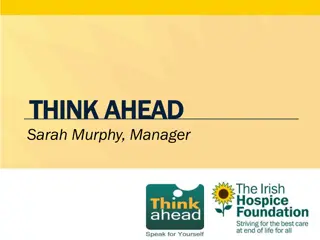For a Better Future… Think Sustainable
Taking steps towards sustainability in a print shop, this initiative focuses on reducing paper waste by printing on both sides, minimizing unnecessary paper use, and implementing a circular economy model. Strategies include using excess paper scraps for scratch pads, printing training manuals more efficiently, and transitioning to digital systems with QR codes to reduce paper waste significantly.
Download Presentation

Please find below an Image/Link to download the presentation.
The content on the website is provided AS IS for your information and personal use only. It may not be sold, licensed, or shared on other websites without obtaining consent from the author. Download presentation by click this link. If you encounter any issues during the download, it is possible that the publisher has removed the file from their server.
E N D
Presentation Transcript
For a Better Future...Think Sustainable What can we do to make paper sustainable? These are things we ve implemented in the Print Shop to help make paper more sustainable: Print on both sides of the page. Printing on both sides of the page is a great way to reduce paper waste, while also saving on printing costs! Streamline systems to minimize unnecessary use and waste. Encourage use of email and flash drives. While technology has evolved and less paper is used than in days past, it is still important to ensure we make careful decisions about what needs to be printed and what does not. Cutting back on paper waste can be a great way to help the environment. The less paper we use minimizes the use of water and energy. These initiatives would require less deliveries by trucks, this too helps the environment and lower greenhouse gas emissions. 2
For a Better Future...Think Sustainable Printed Schedules 480,000 240,000 40,000 20,000 PRINTED SCHEDULES Current Average Monthly Print Annual Average Print Monthly Average Print if Reduced Printing 50% Annual Average Print if Reduced 50% 3
For a Better Future...Think Sustainable Cost for Printed Schedules $22,085.00 $11,042.00 $1,840.00 $920.00 COST OF PRINTED SCHEDULES Current Average Monthly Cost Annual Average Cost Monthly Cost Average if Reduced Printing 50% Annual Cost Average if Reduced 50% 4
For a Better FutureThink Sustainable Pictured to the left, is an example of how we take excess paper scraps and make scratch pads for employees to reuse. This is called Circular Economy , that is a model of production and consumption, which involves sharing, leasing, reusing, repairing, refurbishing and recycling existing materials and products as long as possible. The image above shows another way we ve streamlined our processes. Instead of printing training manuals and other collateral 8 x 11, we re printing them 8 x 5.5 which allows 2 prints out of the original 8 x 11 sheet of paper.
For a Better Future...Think Sustainable New Old By removing stand alone holders and replacing them with QR codes throughout the system, this will reduce waste significantly. Paper schedules will be issued out at allocated points (example: HQ, Five Points) within the system by MARTA personnel. 6
For a Better Future...Think Sustainable Other Cost Saving Initiatives Overtime, with the advancement of technology of equipment, this have allowed us to increase productivity while reducing staff. We ve been able to reduce staff by 3 positions (the last being 2018). Current Digital contract (Canon-3 copiers); next contract plan to reduce to 2 copiers. Streamline systems to minimize unnecessary use and waste. Encourage use of email and flash drives. While technology has evolved and less paper is used than in days past, it is still important to ensure we make careful decisions about what needs to be printed and what does not. Cutting back on paper waste can be a great way to help the environment. The less paper we use minimizes the use of water and energy. These initiatives would require less deliveries by trucks, this too helps the environment and lower greenhouse gas emissions. 7
